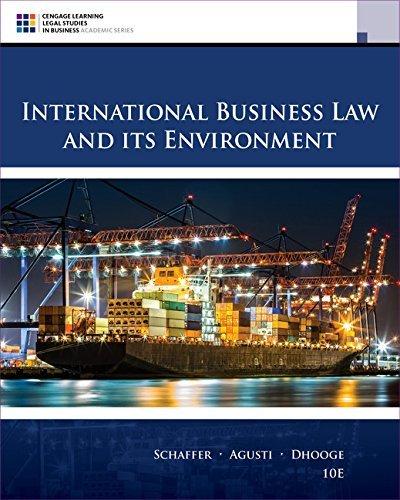Plaintiff attempted to enter steel products at the Port of Seattle. These products consisted of unpainted steel
Question:
1. Why is the process of galvanizing steel important to the court's decision?
2. Consider the process of hot-dip galvanizing described here. Would you agree that the operations performed on the steel in New Zealand created a product with a new name, character, or use? Why or why not?
3. Of the three factors generally referred to-name, character, use-which seems to be the most or least important?
4. What other factors does the court consider in addition to a change in the name, character, and use of the product?
Fantastic news! We've Found the answer you've been seeking!
Step by Step Answer:
Related Book For 

International Business Law And Its Environment
ISBN: 9781305972599
10th Edition
Authors: Richard Schaffer, Filiberto Agusti, Lucien J. Dhooge
Question Posted:





